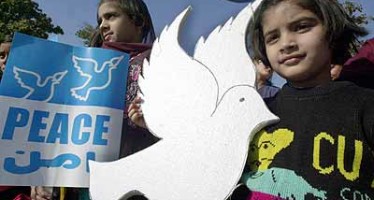Why does Bangladesh need the Ganges Barrage?

The construction of Farakka Barrage by India at 18 km. from the Bangladesh border has been an ill-conceived project and the then Irrigation Engineer of West Bengal Kapil Banerjee opposed it for diverting huge quantities of water from the Ganges to flush the silt of the Hooghly River to save the Kolkata port and he eventually lost his job.
Later, Indian water experts attending a seminar in Kathmandu in 2004 held that Kapil Banerjee was right because it caused devastating effects on the flow of the Ganges (known as Padma) in Bangladesh but also badly affected crops in the vast areas of West Bengal including flooding..Recently Direndranath Sambbhu M.P of Indian Parliament reportedly confirmed the damage done to West Bengal due to the Farakka Barrage.
Due to diversion of huge quantities of water from Farakka Barrage , the Gorai River in Bangladesh is covered with silt at Kumarkhali Railway bridge because the flow of the river towards Bangladesh drops suddenly in October, leading to silting up the off-take of Gorai River. Furthermore according to water experts, 123 rivers in Bangladesh have died around the area.
To offset the adverse effects of the Farakka Barage, in 1963, an American consultancy firm Tippetts Abbett McCarthy Stratton (TAMS) proposed constructing the Ganges Barrage at a location 3 km downstream of the Gorai River in Bangladesh.
In 1981 the proposed site was reportedly changed to a location 4 km downstream of Pakshey Railway Bridge (Hardinge). In 1986 considering possible backwater affecting the Indian territory, the site was shifted to a further down stream near Habashpur, Rajbari. In 2001 it is reported that the site was changed and was selected for the Ganges Barrage near Thakurbari of Kushtia after a study on the Padma Dependant Area .
If the Ganges Barrage is built, according to a report, it is estimated that an additional 2.6 million tones of food grains would be produced and 240,000 tonnes of fish would be available Furthermore the Ganges Barrage would have provided more water to the river near the Rooppur Nuclear Plants, being constructed in Pabna with Russian assistance.
For the construction of the Ganges Barrage, water experts say that India’s support is required. During the visit of the Indian Prime Minister, Prime Minister Hasina invited India’s cooperation in jointly developing the Ganges Barrage on the river Padma in Bangladesh. Prime Minister Modi conveyed that he would have the matter examined by the concerned agencies in India.( Paragraph 18 of the Joint Declaration issued on June 7th, 2015).
Many in Bangladesh interpret that the response from the Indian Prime Minister means that the Ganges Barrage may not be able to see its fruition in near future because the examination of the Indian agencies ( it would have been preferable to include Bangladesh agencies in the examination) has no time-limit by which it would be concluded. This being the case, water experts believe that India failed to appreciate the urgency of the construction of the Ganges Barrage as it should have deserved because Bangladesh needs to rejuvenate dying rivers in the area.
”Bangladesh suffers Tk. 30,000 crore in loss annually because of India’s unilateral withdrawal of waters upstream, according to an estimate made by some environmentalists and river water experts in Bangladesh. Due to insufficient water flows from India, Bangladesh is facing severe losses in crop production, fisheries, aquatics, intrusion of salinity and degradation of environment and forests over the years, they said.
Meanwhile, it is reported that India plans to build 16 new dams on the Ganges River between Varanasi and Hooghly. The 16 proposed dams reportedly would convert the Ganges “into 16 huge ponds… Such dams would further deplete water downstream to Bangladesh and may turn the riverine country into almost a desert.
It is reported that Bangladesh has decided to push for a fair and comprehensive solution to sharing of water not only of the Teesta but of all the 54 common rivers with India. Bangladesh Prime Minister reportedly conveyed this message “very boldly and diplomatically” to her Indian counterpart Narendra Modi during the latter’s recent Dhaka visit. The PM told Modi that Bangladesh expected India to settle the water sharing issues of all common rivers in a spirit of accommodation and fairness.
It is to be noted PM Modi poetically described in a speech in Dhaka that birds, air and water flow uninterrupted as they do not recognize borders. Let his idea turn into reality in water sharing of all trans-boundary rivers to further strength the bonds of bilateral relationship.
By Barrister Harun ur Rashid
Former Bangladesh Ambassador to the UN, Geneva

Barrister Harun ur Rashid
Former Bangladesh Ambassador to the UN, Geneva and Former Bangladesh High Commissioner to Australia (1982-84)
Related Articles
গেমস সফটস এবং ভবিষ্যত প্রজন্ম
২১শ শতাব্দীর প্রারম্ভে প্রযুক্তির উৎকর্ষ পৌছে গেছে সর্বত্র। প্রযুক্তির সমস্ত সুযোগ সুবিধা এখন রিমোর্ট কর্ন্টোল আর টাচ স্ক্রিনের মধ্যে –
Old-mind set of political leaders needs to be changed in South Asia for peace and harmony
A seminar on “Dynamics of Security of South Asia” was organised by the South Asian Group Studies, Sydney University on
মিনার মাহমুদ – বিচিন্তা নামের একটা পত্রিকা
ফজলুল বারী: এখন নয়া পল্টনের গাজী ভবন যেখানে সেখানে তখন সাদা রঙের পুরনো একতলা একটি বাড়ি ছিল। সে বাড়িতে ছিল




